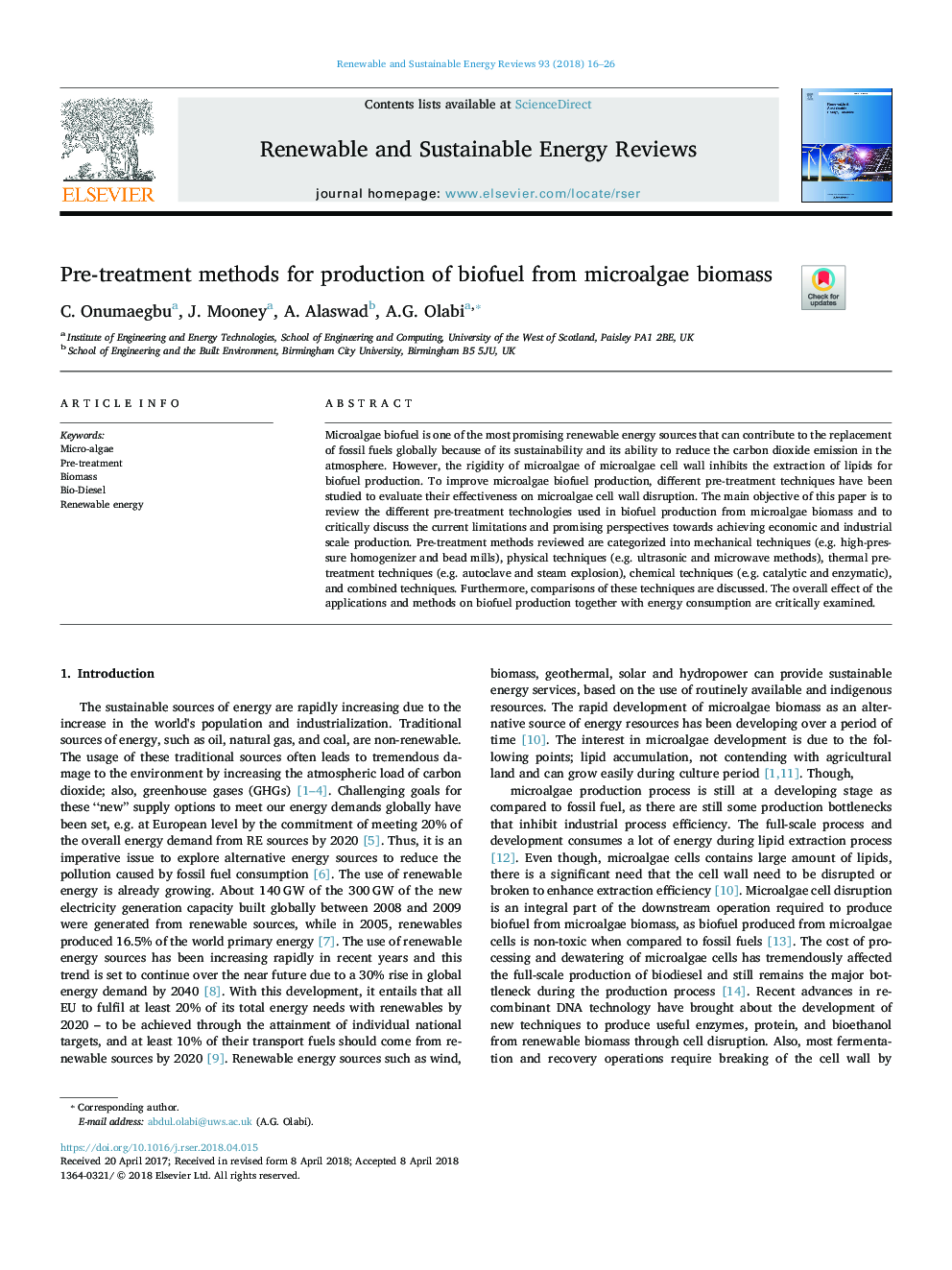| Article ID | Journal | Published Year | Pages | File Type |
|---|---|---|---|---|
| 8110639 | Renewable and Sustainable Energy Reviews | 2018 | 11 Pages |
Abstract
Microalgae biofuel is one of the most promising renewable energy sources that can contribute to the replacement of fossil fuels globally because of its sustainability and its ability to reduce the carbon dioxide emission in the atmosphere. However, the rigidity of microalgae of microalgae cell wall inhibits the extraction of lipids for biofuel production. To improve microalgae biofuel production, different pre-treatment techniques have been studied to evaluate their effectiveness on microalgae cell wall disruption. The main objective of this paper is to review the different pre-treatment technologies used in biofuel production from microalgae biomass and to critically discuss the current limitations and promising perspectives towards achieving economic and industrial scale production. Pre-treatment methods reviewed are categorized into mechanical techniques (e.g. high-pressure homogenizer and bead mills), physical techniques (e.g. ultrasonic and microwave methods), thermal pre-treatment techniques (e.g. autoclave and steam explosion), chemical techniques (e.g. catalytic and enzymatic), and combined techniques. Furthermore, comparisons of these techniques are discussed. The overall effect of the applications and methods on biofuel production together with energy consumption are critically examined.
Related Topics
Physical Sciences and Engineering
Energy
Renewable Energy, Sustainability and the Environment
Authors
C. Onumaegbu, J. Mooney, A. Alaswad, A.G. Olabi,
